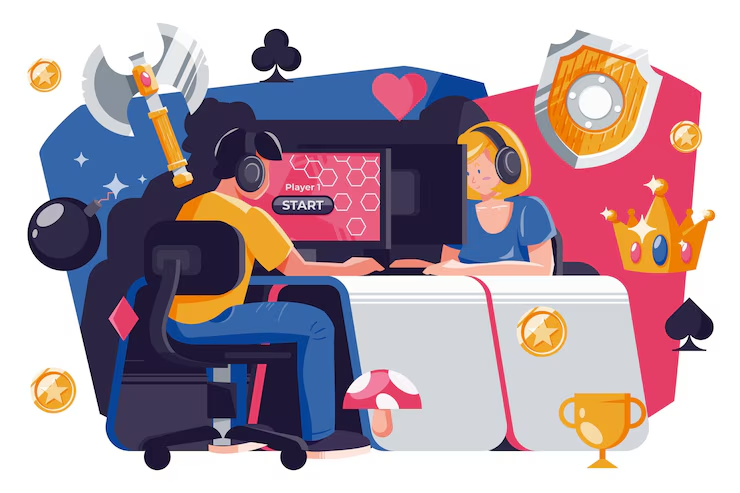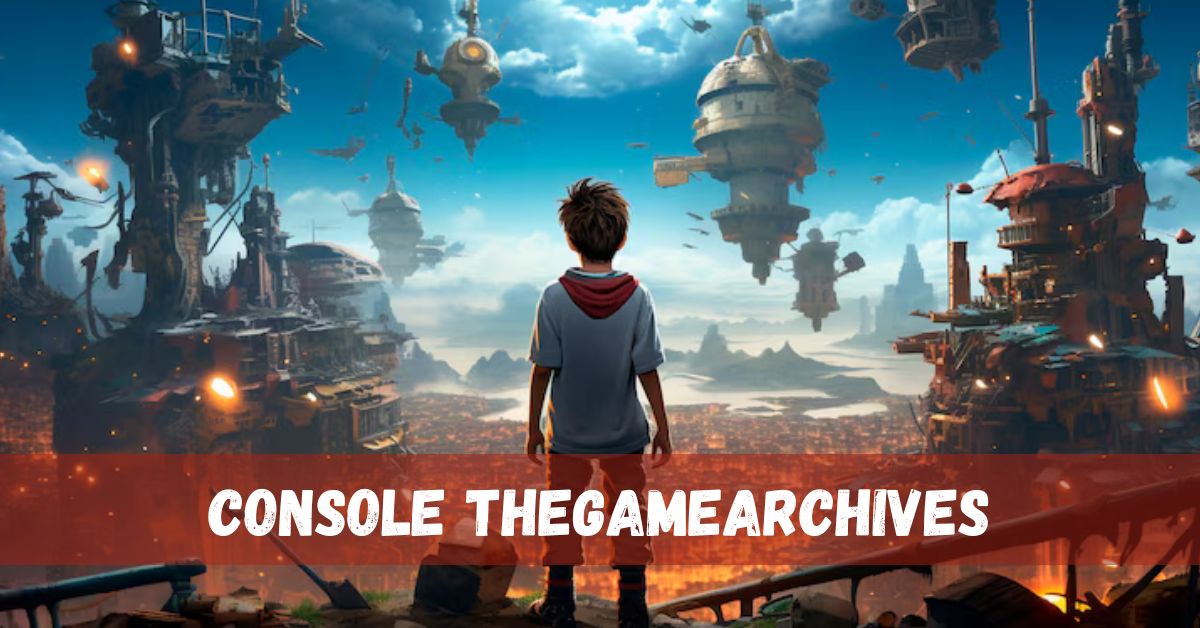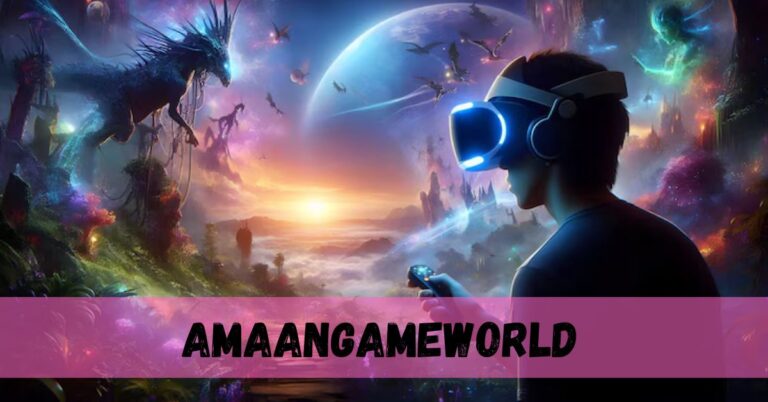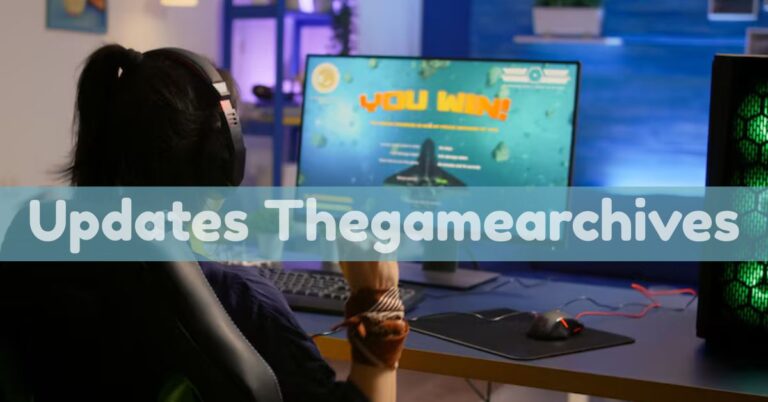Unlocking the Legacy of Gaming History with Console Thegamearchives
Since their inception as simplistic pixelated screens, video games have progressed to become immersive, hyper-realistic experiences that are deeply ingrained in contemporary culture. But while the game industry is always pushing the envelope, fans and historians alike wonder: how can we keep the fascinating history that comes with it? This legacy can be preserved through efforts like “console thegamearchives.” For individuals interested in the ways in which technology, art, and storytelling have always interacted, this work serves as a portal to the history of gaming, providing them with information and insights.
A Journey into the Rise of Gaming Consoles
To fully grasp the importance of “console thegamearchives,” one must first grasp the massive impact that consoles have had on the gaming universe. Video games have been accessible to people all over the world through gaming consoles, which have been in circulation since the early 1970s. The first home console, the Magnavox Odyssey, was just the beginning of a long line of legendary systems that would go on to include Atari, Nintendo, and SEGA.
In addition to being functional devices, these consoles became cultural touchpoints. The Atari 2600 was an early adopter of the concept of removable cartridges, which allowed gamers to access a variety of games instead of just one. Continuing forward to the 1980s and 1990s, the emergence of the Nintendo Entertainment System (NES) and the Sega Genesis (SEGA) laid the groundwork for gaming communities worldwide. Later on, gaming consoles would become ubiquitous with the introduction of the PlayStation and Xbox.
Where do smaller, more specialized systems and games go, though? The histories of these systems are in danger of becoming forgotten as the years pass. Here is where “console thegamearchives” comes in, taking the lead in protecting not only video games but also the innovative mindset that gave rise to them.
You May Like : Discover the Best Investiit.com Tips for Smarter Investments
Archives as Guardians of Gaming’s Past
Preserving the history of video games becomes an essential mission for cultural historians, archivists, or gamers. Similar to how films and books capture the essence of their respective eras, video games do the same. Creating new cultural standards, they reflect social interests, technical developments, and artistic movements. However, there is seldom time for reflection due to the game industry’s lightning-fast growth.
Next, we have the significance of accurate archiving and the efforts of projects such as “console thegamearchives.” This platform goes beyond conventional archives by including not only tangible items like consoles and games, but also intangible aspects that are significant to gaming’s cultural identity. This historical tapestry includes artwork, promotional materials, soundtracks, and even the inner workings of once-iconic user interfaces.

To address a more general issue with digital preservation, “console thegamearchives” painstakingly catalogs these components. What can we do to keep memories alive when they are only available in software or depend on technology that is no longer manufactured? There are solutions that address technological and cultural aspects of gaming thanks to this initiative’s dedication to preserving its progress.
How Console Thegamearchives Stands Out
The capacity to balance accessibility with historical preservation is what distinguishes “console thegamearchives” from the competition. Fundamentally, this project acknowledges that the history of gaming is not confined to the realm of academia. Every gamer who has blew on a NES cartridge, explored three-dimensional worlds on a PlayStation, or competed against pals on Xbox Live may claim it as their legacy.
By compiling these games, “console thegamearchives” helps gamers rediscover the standards and peculiarities of past console generations. It creates an immersive record of the distinctive features of these systems, whether it’s documenting the groundbreaking transition from 8-bit to 16-bit graphics or honoring groundbreaking games such as Metal Gear Solid and The Legend of Zelda.
Beyond just software and hardware, “console thegamearchives” also preserves consoles. It records the feelings that individuals get while thinking about these relics. As much a part of gaming history as the machines themselves are the countless hours spent hunched over the family TV, clumsily using controllers that are now relics of the past, or in awe at technological advancements that appeared alien at the time.
Challenges in Preserving Gaming History
Challenges abound for the “console thegamearchives” quest. Video games are highly dependent on the tools and platforms utilized to experience the data, in contrast to more conventional kinds of media. When a console goes out of production, how can you save the games made for it? Given that current systems rely solely on digital downloads, how can one replicate the experience of blowing into a worn-out NES cartridge?
An enormous obstacle is technological obsolescence. The developers of many gaming consoles and games included proprietary hardware or software that had a limited lifespan. These systems could become permanently unreachable if they are not preserved or replicated correctly.
Intellectual property rights are another issue. The rights of vintage video games frequently remain attached to their creators or publishers for decades after their release, in contrast to books or music that eventually enter the public domain. The goal of “Console thegamearchives” remains the same: to give everyone access to the gaming past, but the legal environment is complex.
Finally, the problem of public awareness must be considered. What becomes of the less popular systems and games when the big-budget ones get all the attention? There were a plethora of obscure consoles released during the fourth and fifth generations of gaming, such the 3DO Interactive Multiplayer and the Philips CD-i. While these may not evoke the same sense of nostalgia as a Game Boy or Super Nintendo, they are nonetheless vital to the history of gaming. Part of inclusive storytelling is giving underrepresented consoles a platform like “console thegamearchives” to share their stories.
How Gamers Benefit from Console Thegamearchives
There is a wealth of information available at “console thegamearchives” for players who are interested in learning where their favorite hobby came from. Fans can rediscover long-forgotten favorites and discover new systems and games they might have missed before. If you’re a fan of classic video games and systems like the Super Nintendo, you might be surprised to learn about some hidden treasures in “console thegamearchives” that had a more underappreciated but more consequential impact on the industry.
These kinds of resources are useful for developers as well. Modern innovators can learn from their successes, failures, and experiments of the past to inform their work of the future. The past serves as a roadmap, showing how daring moves made on earlier systems paved the way for the variety of games we enjoy today. As interactive media develops further, a platform that can store that history will be crucial.
When it comes to academics analyzing the social impact of video games, “console thegamearchives” is a great resource. Academic institutions are embracing game studies as a field of study, delving into not only game design but also the cultural, political, and communicative impacts of games. This kind of platform facilitates direct engagement between academics and students by providing access to original games and consoles.
You May Like : Exploring the Legacy of Augie Martinez Lehigh
The Role of Nostalgia in Reviving the Classics
When talking about “console thegamearchives,” the significant part that nostalgia plays in this trend is impossible to ignore. Bringing back the sights, sounds, and (occasionally) difficulties of old systems brings many players right back to their childhood. Reminiscences of simpler times are meaningful. Awakening memories and inviting newer generations to discover the games that started it all, these archives are accessible through media coverage or museums.
More than just a source of amusement, nostalgia propels conservation efforts ahead. “Console theGameArchives” clearly has a soft spot for retro gaming, as evidenced by every rescued system and replayed game it catalogs. This enthusiasm cements the connection between the analog joysticks of yesteryear and the cutting-edge VR goggles of the present. Game designers are shaped by players’ perceptions of their own gaming history.
A Legacy for Future Generations
Concepts like “console thegamearchives” highlight the obligation to preserve video games for the benefit of future generations. The gaming business has grown into a multi-billion dollar behemoth, with an influence on art and culture on par with that of literature and film. However, the interactive and technological nature of video games makes their preservation different from that of books or movies.
By supporting initiatives such as “console thegamearchives,” younger players and current aficionados will always have access to information about where their hobby came from. The preservation of console archives goes beyond simply preserving equipment; they also maintain the cultural and emotional connections that are inherent inside them. Here is where the initiative’s real meat is—not only archiving consoles and games, but also preserving the narratives that surround them.
Continuing the Mission
When it comes to video game hardware and cartridges, “Console thegamearchives” is much more than just a repository. It’s a celebration of creativity, determination, and the joy of gaming for everyone. We finally give gaming history the respect it deserves by recognizing these items for what they are: cultural milestones as well as relics.
Anyone engrossed by digital culture, current gamers, or individuals curious about the history of gaming will find “console thegamearchives” to be an indispensable resource. It guarantees that the aesthetic value of early game consoles will be maintained, treasured, and available indefinitely, regardless of how technologically advanced subsequent systems are. All the beeps, pixels, and joysticks have found their place in a common legacy thanks to this relentless effort.
With your ongoing support, this mission will only become stronger, not disappear. Platforms such as “console thegamearchives” will ensure that a console’s legacy continues even after it has become obsolete.
You May Like : Exploring the Enigmatic Melisandre in Stunning Detail







